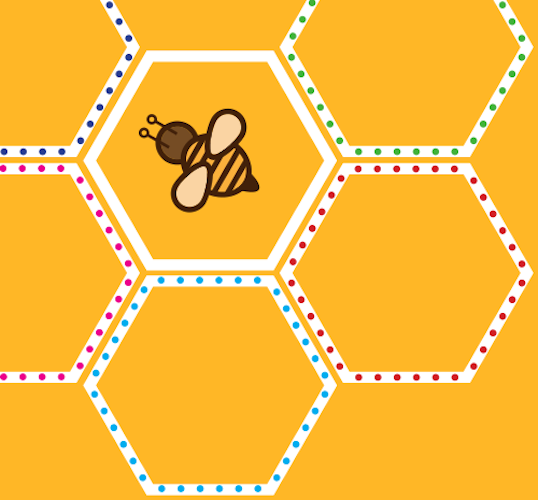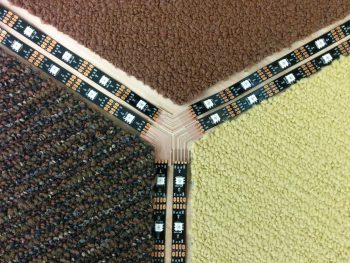| Client: | Trees Atlanta |
| Dates: | Oct–Dec 2015 |
| Skills/Subjects: | interaction design, physical computing, prototyping, UI design |
| URL: | https://github.com/werdnanoslen/simontiles |
Background
The world has seen a huge loss of one of the most important resources for biomes’ sustainability: bees. For trees in particular, bees are integral to their pollination, and they provide an anchor for bee hives. Yet recent human activity has worked against a bee population already under threat of mass-infection by parasites and fungi. The sustainability of trees is closely tied to the sustainability of the bee population and distribution.
Ning Yan, Matt Swarts, and I proposed a project to Trees Atlanta to educate visitors to their Treehouse about the importance of the relationship between trees and bees, and to situate that in the current human activity that significantly threaten that relationship. Our exhibit would be a way to join bees in their waggle dance: the way bees waggle to tell other bees where to find food.
Participants would see a couple of tiles on the floor that make buzzing sounds when stepped on. A sign on the wall would show how bees do the dance and compare how fast the bees waggle and how fast a participant waggles. This speed would be measured from mats that participants would waggle (quickly stomping with both feet) across while it makes noises. An image of a flowering tree (or perhaps a Treehouse window framing a tree outside) would be in front of the waggle mat, and the sun would be 90 degrees from that. This relationship of the sun, trees, and bees would be tied together by this interactive game.
The exhibit would also feature signage to provide information that shows the most significant threats to bees in a very simple way, so that younger audiences are able to grasp the simple message. It would also provide enough robust information so that older audiences can understand the cause and effect of current practices and ways of reducing the effect in their daily decisions.
We aligned with the goals of the Bee Lab at the Royal College of Art in London, which has produced a number of artifacts for helping beekeepers and enthusiasts to collect data on bees. If we had more time, our proposal could have been in collaboration with this project by providing a curated selection of this data with links or instructions on how visitors could contribute.
Construction
The waggle game mat was constructed form six hexagonal carpet tiles with a simple piezo element below them to detect pressure. These were each surrounded by addressable LED strips connected to an Arduino running the software. The software is available on Github and is a implementation of the common Simon game, where the game lights up in a random sequence that the player must repeat back in order. Ning and I designed and prototyped the game, while Matt (our instructor) helped us especially with providing resources, checking our hacked electrical connections, and fabricating the angled circuit connectors between each LED strip. Here is a video of our work in progress to this point:
We soldered dozens and dozens of connections.
And finally, they were fastened to a wooden board and trimmed to create a working platform. The prototype was deployed to Trees Atlanta briefly for testing with the following poster:



